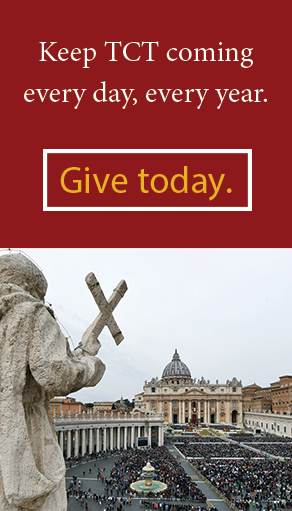Not long after Roe v. Wade was decided (1973), a notable figure in medical research opined that the Court had not been liberal enough in fashioning this right to have an abortion virtually through the end of the pregnancy. He suggested that the parents be given four or five more days to gauge any disabilities in the child and whether they wished to keep her alive.
Let’s imagine a scheme in which the parents were given as much as 30 days to “try out” their comfort with the child. And let’s imagine that pro-lifers persuaded a legislature to cut that down to 15 days. We can readily assume that the pro-choicers would go into panic mode, seeing in this move the portents of sweeping away that right to abortion. But of course, nothing in the shift of 15 days would have marked any difference in the nature, or human standing, of the child.
And yet we have had a kind of replay of this scene over the last week. The Supreme Court set off tremors in the land when it announced that it would take up a case challenging a recent law in Mississippi that would bar abortions after 15 weeks of pregnancy. That move would notably extend the restrictions of the law into a period before the onset of “viability,” which has been at about 23-24 weeks these days – and perhaps even earlier.
There is a difference, then, of only about eight weeks, and yet that has been enough to stoke the fears and warnings that Roe v. Wade could now be overruled. But once again, that shift in eight weeks does not mark anything different, anything less than human, in the baby being aborted. Nor would it make a difference if we traced matters back 15 days, or even 15 or 20 weeks back to the point in the pregnancy when the very same being was an embryo. She has never been anything less than human, and never merely a part of her mother’s body.

But the Court has firmed up “viability” as the critical marker, for as the judges persist in saying in a convention of imbecility, the State may act then to protect “potential life.” Potential life? A pregnancy test marks the fact that something is indeed alive and growing in the womb. If there were not, an abortion would be no more apt than a tonsillectomy. But if there were something alive and growing there – and not a tumor – it could be nothing other than a child in the making. That embryo may be a “potential outfielder” or “potential stockbroker,” but he has never been merely a “potential human child.”
Chief Justice Rehnquist once made the obvious point that the scheme of “trimesters and viability. . .[is] not found in the Constitution’s text.” But when Justice Anthony Kennedy made his move to preserve Roe v. Wade (in Planned Parenthood v. Casey, 1992), he insisted that there was a need to “draw lines” in the regulating of abortion, and “there is no line other than viability which is more workable.”
More “workable” for what? Not in determining if that small being in the womb is turning into a human being from something less than human. Kennedy fell back upon the same “explanation” that has had an implausible endurance: that viability marks “the time at which there is a realistic possibility of maintaining and nourishing a life outside the womb.” But even ordinary folks, without graduate degrees, readily grasp that people don’t lose their standing as human beings when they suddenly fall ill and cannot survive without the care of others. To take the curious line that weakness now works to extinguish any rights to solicitude and care is simply to back into the old doctrine of the Right of the Strong to rule, or Might makes Right.
Back in 1989, in the Webster case, the Court seemed to have taken a first step in returning the issue of abortion to the political arena, where citizens and legislature could argue and vote on the question of who is protected under their laws on homicide. Chief Justice Rehnquist, writing for the majority, planted the question of “why the State’s interest in protecting potential human life should come into existence only at the point of viability, and that there should therefore be a rigid line allowing state regulation after viability but prohibiting it before viability.”
A conservative majority now on that same Court clearly understands that “viability” is no serious marker; that the same reasons for barring abortions at 15 weeks would carry all the way down to protect child in the womb from the beginning. Still, even a conservative majority may be quite cautious about overturning Roe in a single, major stroke.
But the defenders of abortion, in their panic, feigned or real, may have confirmed the alternative path. They have always put themselves in opposition even to the mildest restrictions on abortion – the Democrats in Congress have been virtually unanimous in resisting the bill even to protect the babies who survive abortion.
For they see the principle that lies at the heart of thing: once the child in the womb is recognized as a human being, on a plane no less than theirs, with a claim to the protections of the law, there is no obvious marker, in age or development, that separates that child from the rest of us. In other words, the fierce defenders of Roe see their whole position unraveling, with no stopping point.
The overturning of Roe in a stroke may indeed set off a firestorm among people too ready to inflame. But the more limited decision to sustain this law in Mississippi may impart a new fillip to that moral opposition to abortion, holding steady and building over the years. And it may be the gentle step that puts that constitutional right to abortion “in the course of ultimate extinction.”
*Image: Madonna del Parto by an unknown artist, 17th century [Church of St. Peter, Leonessa, Italy]

















